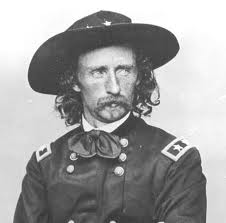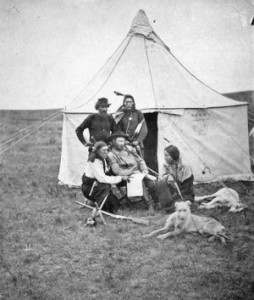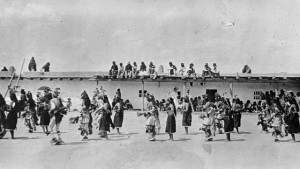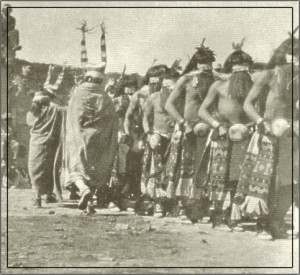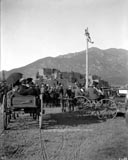Colonel George Armstrong Custer brought hundreds of soldiers to help him search for a good spot to put the army’s new fort. (See last post.) For some reason, he also brought along two miners—who found gold. It wasn’t a big strike by any means, but it fed the rumors about gold in the sacred Black Hills. Soon other prospectors did find gold—a huge amount—and treaties didn’t mean much after that. Miners poured into the region, with more and more settlers following.
The Sioux defended their land, but nothing would stop the onslaught of miners. Finally the Commissioner of Indian Affairs decreed that if the Lakota didn’t settle on reservations by January 31, 1878, they would be considered hostile enemies. The Lakota refused to go to the reservations.
A respected leader, Sitting Bull, gathered warriors from the Lakota, Cheyenne, and Arapaho tribes to his camp in Montana Territory. He had a vision that showed the white soldiers falling in the Lakota camp like grasshoppers falling from the sky. That vision inspired another war chief, Crazy Horse, to lead the first of several battles against the military forces sent to defeat Native Americans’ resistance .
The U.S. soldiers did fall like grasshoppers. However, after Custer’s defeat at Little Big Horn, the Fort Laramie Treaty boundary lines were redrawn so that the Black Hills fell outside protected territory.
________________________________________________________________________
